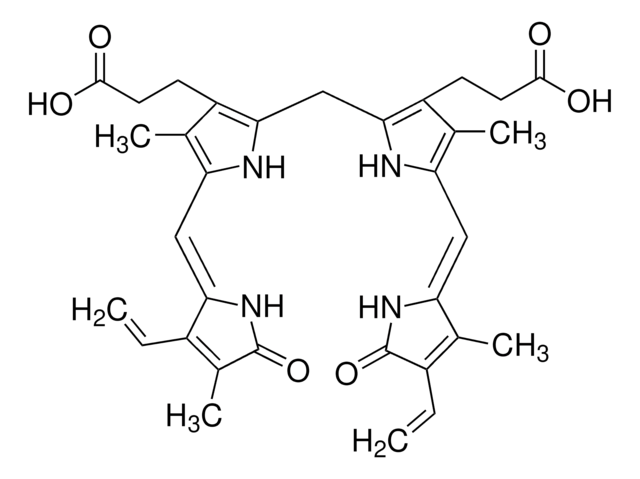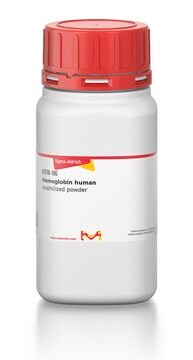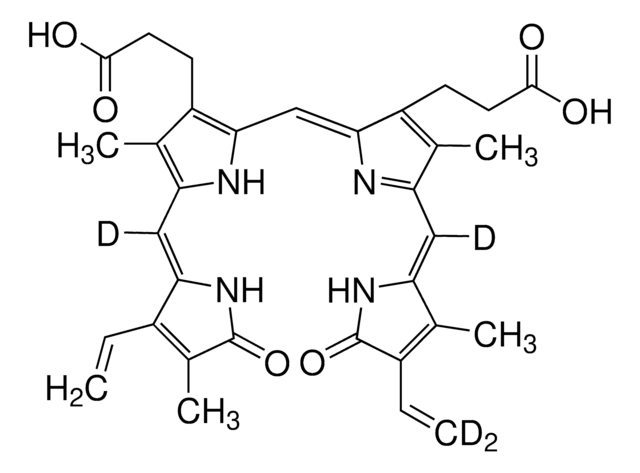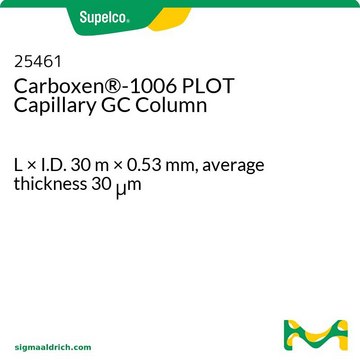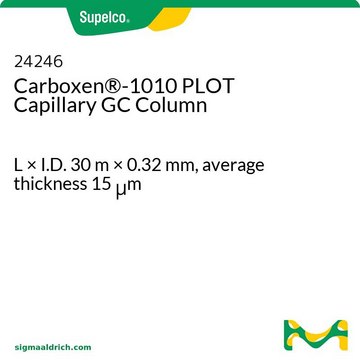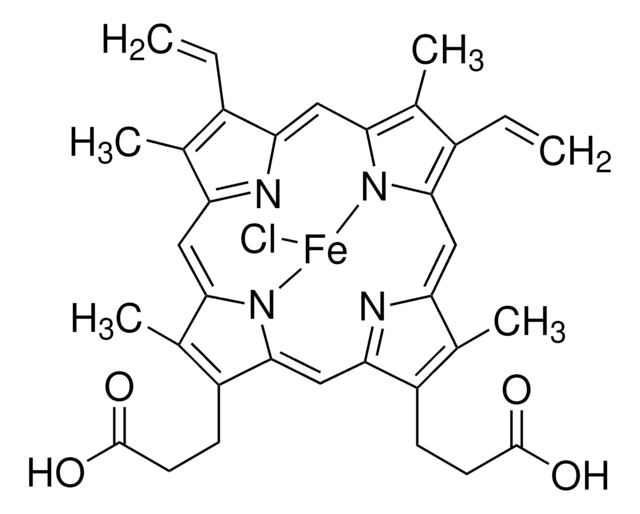30891
Biliverdin hydrochloride
≥97.0% (TLC)
Sinónimos:
Biliverdin
About This Item
Productos recomendados
assay
≥97.0% (TLC)
form
powder or crystals
application(s)
metabolomics
vitamins, nutraceuticals, and natural products
storage temp.
−20°C
SMILES string
Cl.CC1=C(C=C)C(\NC1=O)=C\c2[nH]c(/C=C3\N=C(\C=C4/NC(=O)C(C=C)=C4C)C(C)=C3CCC(O)=O)c(CCC(O)=O)c2C
InChI
1S/C33H34N4O6.ClH/c1-7-20-19(6)32(42)37-27(20)14-25-18(5)23(10-12-31(40)41)29(35-25)15-28-22(9-11-30(38)39)17(4)24(34-28)13-26-16(3)21(8-2)33(43)36-26;/h7-8,13-15,35H,1-2,9-12H2,3-6H3,(H,36,43)(H,37,42)(H,38,39)(H,40,41);1H/b26-13-,27-14-,28-15-;
InChI key
KTRFJVRKVQROKS-UJCZHUFNSA-N
Categorías relacionadas
General description
Application
- as a treatment to J774A.1 cells to study its role in alternation of beta (β)-endorphins level
- as a commercial standard for the detection of biliverdin in mouse unstable and stable plaques tissues using liquid chromatography-tandem mass spectrometry (LC-MS-MS)
- to add to Fucci-containing cells to improve the mIFP signal
- to examine its impact on infrared fluorescent protein (iRFP) in some retinal preparations
Biochem/physiol Actions
Packaging
signalword
Warning
hcodes
Hazard Classifications
Eye Irrit. 2 - Skin Irrit. 2 - STOT SE 3
target_organs
Respiratory system
Storage Class
11 - Combustible Solids
wgk_germany
WGK 3
flash_point_f
Not applicable
flash_point_c
Not applicable
Certificados de análisis (COA)
Busque Certificados de análisis (COA) introduciendo el número de lote del producto. Los números de lote se encuentran en la etiqueta del producto después de las palabras «Lot» o «Batch»
¿Ya tiene este producto?
Encuentre la documentación para los productos que ha comprado recientemente en la Biblioteca de documentos.
Los clientes también vieron
Nuestro equipo de científicos tiene experiencia en todas las áreas de investigación: Ciencias de la vida, Ciencia de los materiales, Síntesis química, Cromatografía, Analítica y muchas otras.
Póngase en contacto con el Servicio técnico